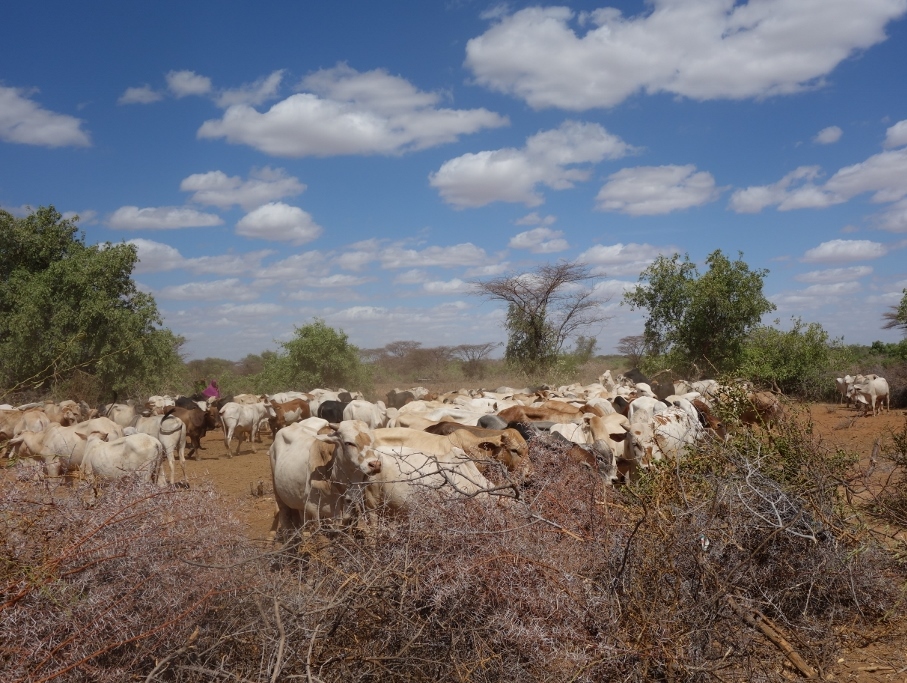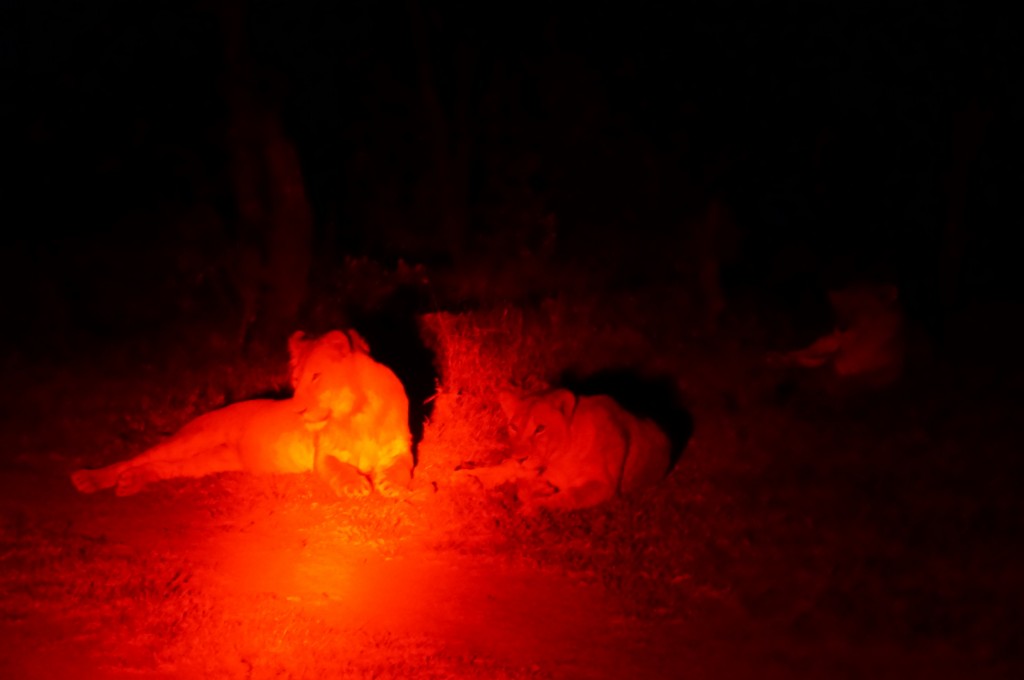April 28, 2014. Night. The 330 cattle of KP 21 shifted nervously in their two make-shift bomas. It was dark, the type of impenetrable black where you can’t see a hand held six inches from your nose. The moon wouldn’t rise until 5:58 a.m. and even then it would be a mere sliver of light, the final gasp of a waning lunar cycle. The cattle should have been in Lewa, safe behind stout metal fences. Instead they were held up in Il Ngwesi, spending the night within a ring of acacia branches. There had been a miscommunication about foot and mouth disease vaccinations and the people needed to resolve the problem (me included) couldn’t be reached. Four herders patrolled the bomas’ perimeters armed with flashlights, walking sticks and rungu, a short club with a hard knob on one end. Two others slept nearby in bedrolls next to a small fire.
Suddenly the 180 cattle in one of the bomas shifted into high alert, snorting, braying, stomping and knocking into one another as adrenaline shot into their veins and readied their bodies to run. The herders switched on their torches and swung the beams into the stygian darkness. Five lioness in tight formation bolted into the light, leaped over the thorn barricade and landed among the cattle. They attacked instantly, several in unison sinking their claws into a cow’s flank and pulling it onto its side in the dirt. A companion latched her teeth into the cow’s neck and yanked back to rip the flesh. With one cow incapacitated, the lioness left it to bleed to death and moved with ruthless efficiency to another. Cattle crashed against each other to get away and quickly flattened one side of the thorny boma. Safety lay outside the ring and they stampeded into the night.
Hours later when sunlight illuminated the scene, seven carcasses littered the ground and 173 cattle were missing. The herders went to work rounding up the survivors, chasing them out of gullies and from underneath acacia trees. NRT’s bright red temporary brand – a slash of fresh paint across each cow’s rump – identified those who had snuck into an enclosed manyatta or joined a herd grazing by the road. The communities were sympathetic and helped usher cattle back to the repaired boma. At last count, 148 have been recovered. They are grazing peacefully on Lewa. Twenty-five are still missing.
We know cattle, when lost, tend to find their way like homing pigeons back to their original herd. It is likely that some of the twenty-five have done just that, returned to the herders who sold them to NRT.
Last Friday NRT paid the herders for the cows of KP 21, all 330 of them. As the money changed hands, NRT reminded everyone that if they accepted payment for cattle that had returned home, it was theft. Even worse, they would be cursed, supposedly a serious issue for a Samburu. The curse would be lifted if NRT recovered 15 of the missing 25 cattle. So far, no one has come forward and admitted to having one of the cows. We’ll see what happens. The curse remains in effect.



Wow!! That’s all I can say this early in the morning. But so well written. I feel like I’m there, watching this all unfold.
Glad I wasn’t there amidst the carnage on that Stygian night.
Great account Anne!
Tim
Anne, we are getting to experience this through you. Thank you!
The lions of the northern rangelands must not care about your LTM P&L. Keep the faith and remember . . . small incremental improvements over the long run will make a difference. Good luck.